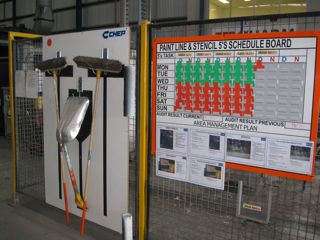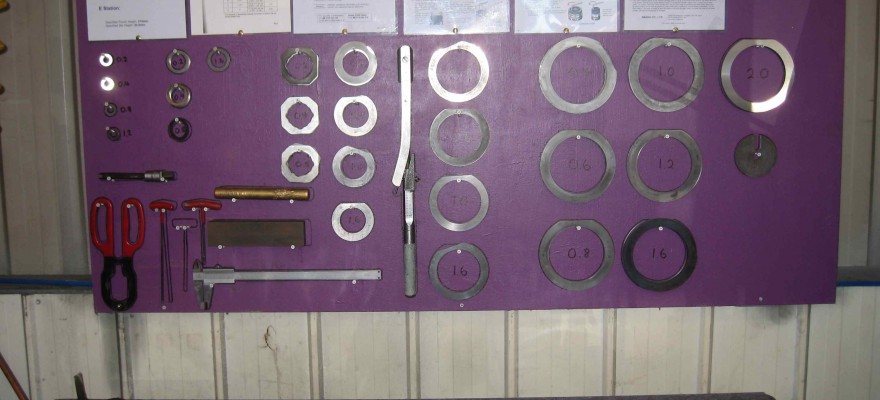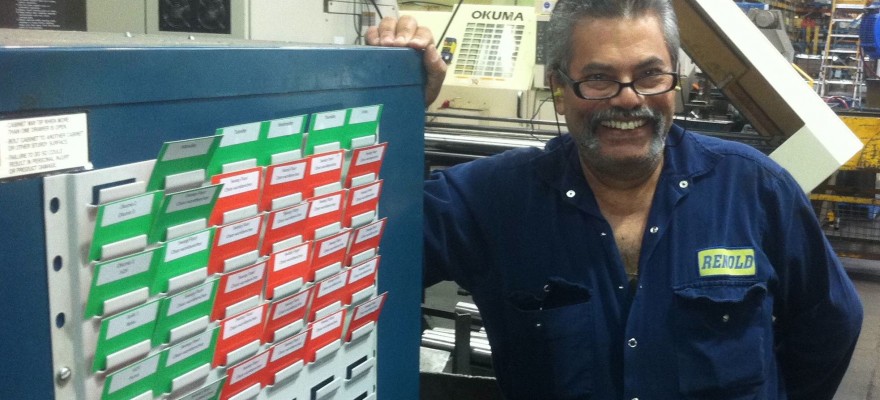
Around 20 years ago, when I was first being introduced to Japanese Manufacturing techniques, one of the first tools I learned and implemented was 5s. In hindsight, I became rather enamoured with that tool and was guilty, like many, of being happy to focus just on 5S and not seeing that it was actually a small part of an overall management system.
As a result of people like me seeing 5s as “The Answer”, it has got a rather bad name among the elite of lean experts, who are dismissive of 5S (if you doubt this, try and find mention of it in a major lean conference – you probably won’t). It’s often considered being just window dressing and a bit superficial.
Making things worse, some authors and some consultants have presented 5s as “The Answer” for achieving continuous improvement in business. Huge management structures have been developed and many pages are written around what is a very simple improvement tool. Although equally TPM, Visual Management and Autonomous Work Teams have been (and still are) presented as “The Answer” and probably don’t come into the level of criticism that 5S gets.
As we all know (or should know by now), all these tools and techniques are elements of a lean management system and work best when used together in an integrated approach. In my opinion, 5S is an essential foundation element in any lean management system.
5S Matters For Three Reasons
1. Creates a standard for the workplace
Firstly it creates a standard for the workplace. Effective 5S creates an environment where the expectations of how a workplace should be organised are clearly established, with the involvement of all the people who work in that workplace.
Processes are then established to maintain and improve the standard of organisation that is achieved. By establishing a standard for workplace organisation and tools to keep improving this standard it provides an excellent platform to engage people in the discussion of work cell design and standard work.
Likewise, the routine of regular tasks and auditing required by 5S is readily extended to simple cleaning, checking and lubrication tasks, providing a platform for autonomous maintenance.
2. Provides the foundation for visual control
The second reason 5s matters is that it provides the foundation for visual control.
This is the use of simple visual tools and signals in the workplace to enable us to make decisions and see problems quickly. That old 5S favourite, the shadow board, is a great example as it enables us to see at a glance, what tools we have and what tools we are missing.
In my experience, effective visual control is one of the most important elements of sustaining lean. Once established and accepted by the team in a workplace, visual controls tend to be hard to “break.” This is because the use of visual control is everywhere in our world.
Lines, signs, colour coding and symbols are used everywhere our world to enable us to make decisions in almost every walk of life. When driving we all know to stop on a red light and go on a green one. We do not have to refer to anyone and can make the decision instantly. It is also the same decision whenever and wherever we see that particular control.
Visual controls are therefore part of our everyday life and a very human solution to controlling the everyday behaviour of millions of people in potentially difficult or even dangerous situations.
Imagine for a moment a world without these every day visual controls. Chances are (unless you have effective 5s), you already know such a world, and it is the place where you work! In the workplace, it makes sense that the use of the same kind of visual controls that we see all around us can simplify our work and empower us to make everyday decisions without the need to refer to a supervisor or manager.
This important for safety (e.g. separating people from forklifts or signalling what PPE to wear), but is also very important in controlling our business processes. For example, a kanban system is usually visually controlled and relies on the materials and kanban cards being returned to the right place every time.

A FIFO lane is designed to control the level of work in progress between processes but only works if all product is placed within the lane. A Heijunka box manages the sequence of work and allows us to see our backlog at a glance, but only works if production orders or kanban cards are returned in the correct sequence in a timely way.
To make visual control work requires a discipline that things only go where they belong and that we all follow a standard process.
An audit process is needed to check that this discipline is maintained and a process for improvement is needed to address problems.
Therefore if our FIFO system, our kanban system or production cell is to work we need a foundation process that controls the organisation of the workplace. The system for achieving this is 5s. So don’t be afraid – get out the line marking paint and the labelling machine and order some shadow boards. Expect high standards of housekeeping and maintain a regular auditing regime.
If you are to be successful in sustaining lean you need a visual workplace and you need standardisation I don’t know a better way of achieving this than 5s. However, so you don’t make the mistake that I made 20 years ago, remember that 5s is a foundation tool and there is more to a house than its foundations.
3. Standardise leadership activity to routinely improve the workplace

The third reason is to standardise leadership activity to routinely improve the workplace. Getting the leader to walk through an area and discuss the 5s every week is very powerful. The “Manage By Exception” alternative is for managers to discuss issues with employees only there is a concern.
Routine discussion between Managers and staff ensure small problems are addressed. Join together the weekly audit with an expectation to improve and you get a work area where the area owner is actively trying micro improvements within their control.
The manager becomes accountable to the working team to consistently approach the area owners and discuss 5s and help identify improvement.





